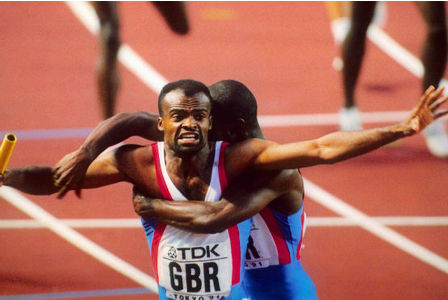It’s not what you’ve got, it’s how you use it
- Details
- Created on Thursday, 30 August 2012 11:17
A common question when looking at the SDI Dynamic Triangle is ‘what makes the perfect team?’ Often followed by ‘surely to be balanced we need each MVS present?’
My stock answer, after referring to the SDI not being competency based etc, is to list some of the potential perceptions of Overdone Strengths between each MVS and then ask what kind of atmosphere there might be if these perceptions are running.
Watching the rowing events during the Olympics highlighted the real answer to the question of what makes the perfect team. Sir Steve Redgrave pointed out that in rowing you can take the fastest eight, four or pair of individual rowers and put them in a boat, but they can still be beaten by a crew of slower individuals.
 Some years ago I had the pleasure of meeting Kriss Akabusi;
he ran the final leg of the 4x400m relay in the 1991 Tokyo World Athletic
Championships. This was another example of, on paper at least, an American team
that should not be beaten and yet Team GB thought differently, worked together
with confidence and brought home the gold.
Some years ago I had the pleasure of meeting Kriss Akabusi;
he ran the final leg of the 4x400m relay in the 1991 Tokyo World Athletic
Championships. This was another example of, on paper at least, an American team
that should not be beaten and yet Team GB thought differently, worked together
with confidence and brought home the gold.
When looking at a Dynamic Triangle with a variety of positions scattered around it, the answer is not on the paper chart. It is in the learning. It is the appreciation of the different strengths each brings to the team. It is the harnessing of the very differences that cause other teams their problems that makes a difference.
The understanding that comes from the SDI and Portrait of Personal Strengths-based conversations brings people closer together. It energises and promotes creativity and confidence. Conflict is inevitable, however when handled effectively it can strengthen relationships. Even when certain areas are not covered we can compensate behaviourally and train to develop those areas. These tools do not necessarily make the ‘perfect team’ but they certainly help to put your team ahead of most others.



